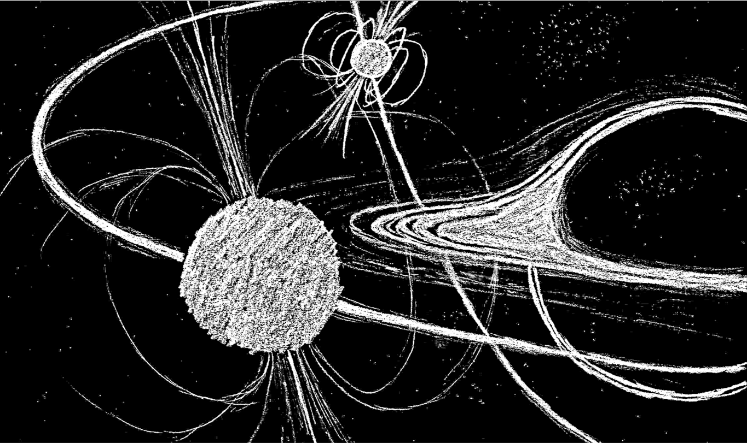Future observations with next-generation large-area radio telescopes are expected to discover radio pulsars closely orbiting around Sagittarius A*, the supermassive black hole dwelling at our Galactic Center. A key science project of the Square Kilometre Array (SKA) aims to provide high-precision measurements of the spacetime in the environment around the Galactic Center. The discovery of highly magnetized neutron stars, called pulsars, in this environment will allow us to initiate novel tests of Einstein's general relativity and black hole spacetime.
The spinning of Sagittarius A* is vital to characterize the supermassive black hole and it is crucial in testing the “cosmic censorship conjecture” and “no hair theorem” of black hole spacetime in Einstein's general relativity. Previous studies have shown that the spin of Sagittarius A* could be measured within 1 percent relative uncertainty by timing radio signals from pulsars. However, these measurements depend on the discovery of a pulsar in a very compact orbit of less than half a year, a challenging prospect from observation. In order to alleviate the problem, a recent study, carried out by Zexin Hu and Prof. Lijing Shao from the Kavli Institute for Astronomy and Astrophysics at Peking University, provides a novel method of combining the observation of two pulsars with larger orbital periods in the Galactic Center to precisely measure the spin of Sagittarius A*. The work has been published in the journal Physical Review Letters.

Illustration of the Galactic Center supermassive black hole and two pulsars (Zexin Hu / PKU)
Measuring the spin of Sagittarius A* with a single pulsar suffers from the so-called leading-order degeneracy among spin parameters. Previous studies thus require a pulsar with a very short orbital period—that has strong relativistic effects—and long observation time span to break the degeneracy. However, this new study shows that by properly combining the timing of a second pulsar, one can determine the spin of the central black hole only with their measurables that are available with a relative short observation.
With the numerical timing model based on the post-Newtonian equations of motion, Zexin Hu and Lijing Shao carried out extensive numerical simulations of observations. Their results suggest that combing pulsars with orbital periods at the range of 2 to 5 years can already reach the measurement precision expected in previous studies. The observation of the second pulsar can efficiently break the parameter degeneracy and lead to an improvement of the measurement precision of spin parameters by about two orders of magnitude compared to the single-pulsar observation of the first pulsar.
By modeling the Galactic Center pulsar population, the work points out that in future observations, it is more likely to find two pulsars with large orbital periods rather than finding a pulsar with very tight orbit. Thus, this study provides important guidance to the analysis of future pulsar data and creates a new possibility of precisely studying the supermassive black hole and its environment in our Galaxy.
This work was supported by the National SKA Program of China, the National Natural Science Foundation of China, and the Max Planck Partner Group Program funded by the Max Planck Society.
Link to the journal paper: https://link.aps.org/doi/10.1103/PhysRevLett.133.231402